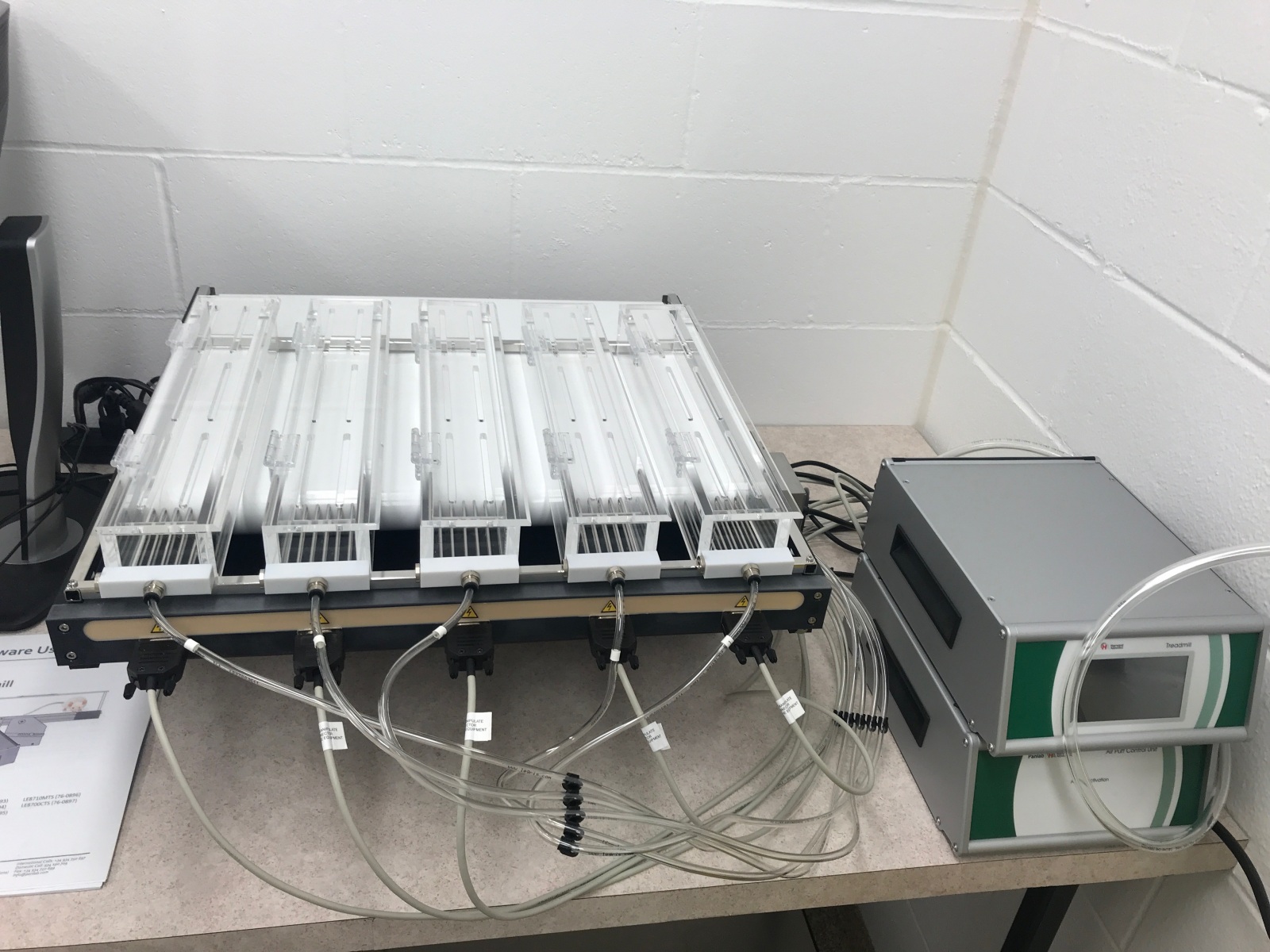The treadmill is an apparatus used to evaluate the effects of exercise and different intensity training on physical health, cognitive and mental health. Scientists usually use it to phenotype different genetic of disease model, assess the recovery of motor and locomotion function from injuries, investigate the drug effects on motor function.
The apparatus has a simple construction consisting of rolling belts with an adjustable speed and slope, enabling forced exercise training and accurate testing of fatigue in rodents. The treadmill systems utilize shock grids to motivate the animal to keep running. Researchers have the opportunity to observe simultaneous performances of different treatment groups when using this five-lane treadmill.
The features include:
- New control unit with integrated touchscreen graphic user interface
- Adjustable belt speed from 0.4 to 150 cm/s (NEW low speed function!)
- Positive and negative belt slope from -25 to +25 degrees
- Models from single to five lanes for mice and rats; single lane for rabbits
- Constant electrical shock intensity (adjustable from 0 to 2 mA)
- Optional air-puff accessory (interchangeable with shock as motivating stimulus to force exercise)
- Optional SEDACOM software for communication with PC for data storage
- Models available for indirect calorimetry (respiratory metabolism studies)
- Minimal maintenance and easy cleaning
